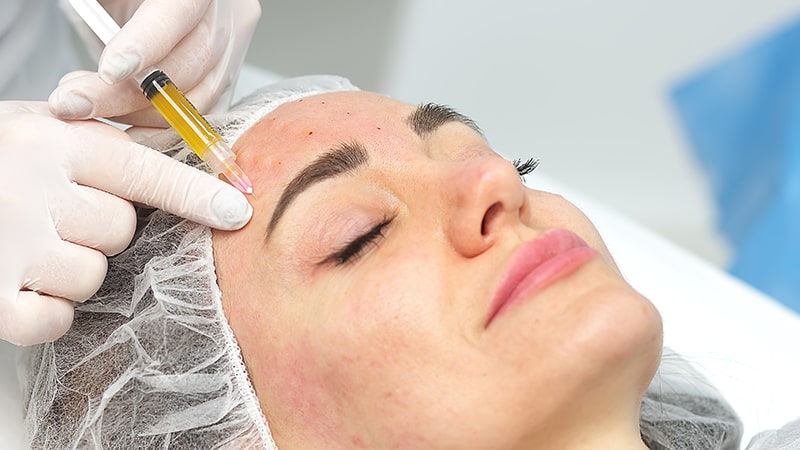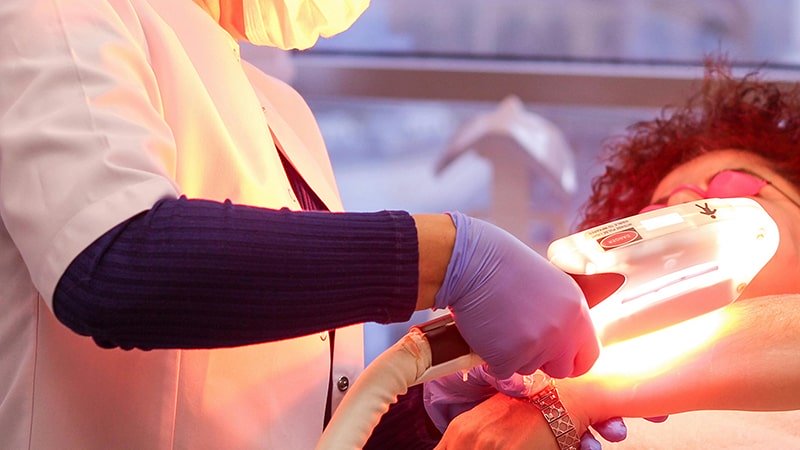Injected mesotherapy is based on the application of a combination of active ingredients through small injections in the middle layer of the skin, in both facial and body treatments. These are shallow injections, less than 4 mm. This is intended to improve blood circulation, lymphatic circulation and give vitality to the skin.
The objective of the substances injected in mesotherapy is to reduce volume, cellulite and stimulate the functions of the skin to improve flaccidity and rejuvenate the skin. In addition to the face, the areas where it is most frequently applied are the abdomen, buttocks and thighs.
Since injections are used, this treatment can only be performed by trained professionals. As it is an invasive technique, it can produce some side effects such as irritation, burning and small hematomas.
Its use is not recommended in pregnant or breastfeeding women, in people with coagulation problems, with skin infections or with allergy to any of the substances.
Usually, before injecting anything, an evaluation is made to determine the needs of each person in order to prepare or choose the most appropriate products for the treatment to be performed.
They are short treatments, usually not exceeding 30 minutes in duration. Normally, a gentle massage in circles is performed after the injection.
What products are used for injected mesotherapy?
Actually, almost any asset can be injected by mesotherapy. However, depending on the needs of each individual, different combinations of active ingredients are used together with other substances.
In addition, not all substances known and permitted for cosmetic use can be used for injected mesotherapy. To this end, they must comply with the following principles:
- First of all, the components of the cocktail used for mesotherapy injections must be water-soluble. This means that they must be able to dissolve in water and not in oils.
- Secondly, they must be compatible. This includes that they have the same PH, the same shape and enhance each other’s characteristics. In short, they must act in synergy.
- They must also be isotonic substances, so as not to cause cellular alterations due to changes in osmotic pressure.
- They must not be irritating or cause allergies.
Among the most commonly used substances for mesotherapy, in small doses, we can find those that are generically used recurrently in other aesthetic treatments, such as vasoactive, anti-inflammatory, lipolytic, analgesic, hyaluronic acid, peptides and vitamins, among others. One of the most important objectives is to increase the production of collagen and elastin, using amino acids and organic silicon to promote skin improvement.
- When inflammation is to be reduced, vasoprotectants and healing agents will be used.
- Lipolytic substances such as L-Carnitine, caffeine and Triac are used to reduce localized fat.
- When the objective is to reduce cellulite, caffeine, vitamin C, Asian pennywort and artichoke extract are also used.
- In cases of varicose veins or vascular treatments, the use of vasodilators, anesthetics and myoplegics is common.
- It can also be used for hair treatments, in which case platelet-rich plasma and different regenerators are used.
The results of injected mesotherapy are not immediate. We will observe them as the days go by, when the injected substances take effect in the skin layers.
How is mesotherapy injected?
Injected mesotherapy has two types of techniques, one manual and the other using a gun.
- Manual mesotherapy: this is the most common method of applying injected mesotherapy substances. It allows a closer approach to the treatment, since the person performing the injections can feel the depth of the injections. Within the manual injection method, there are three other techniques that can be adapted according to the area and sensitivity of each person:
- Nappage
- Point by point
- Intradermal papule
- Gun mesotherapy: a gun is used instead of a syringe. It helps the treatment to be applied by any person, but eliminates all possibilities of personalization of the treatment.
The best time to start acting against the consequences of aging, regardless of the treatment, is when effects such as lack of tone, sagging skin, flaccidity or the appearance of wrinkles begin to be noticed.
Although erroneously, transdermal electroporation is also known as (virtual) mesotherapy. This confusion is due to the similarity of the treatment. However, electroporation is non-invasive and reaches deeper into the skin, so the effects are superior.






